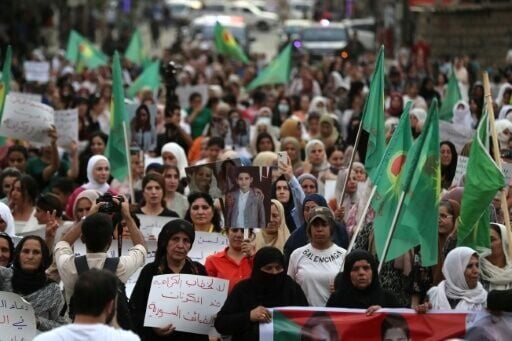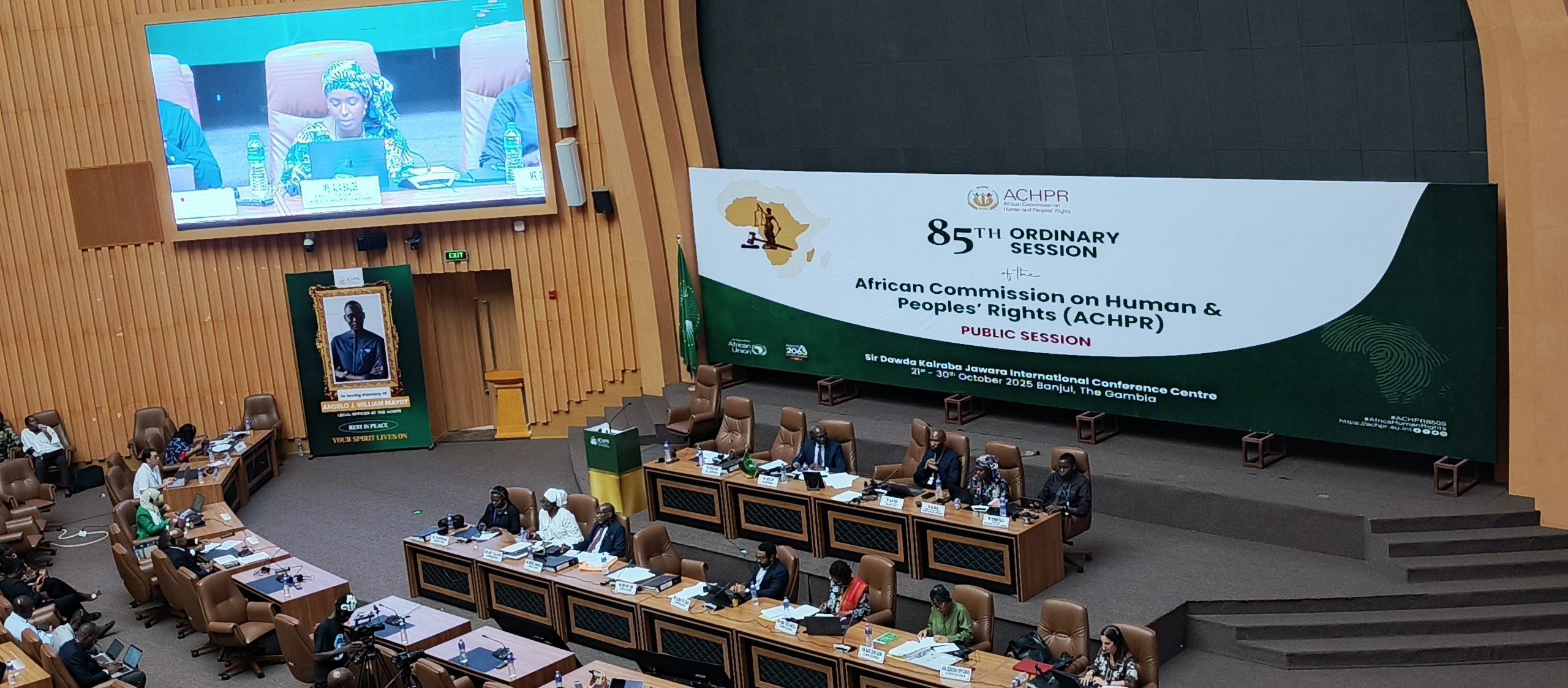Syria: ICRC warns of deteriorating humanitarian conditions in Sweida and southern Syria – International Committee of the Red Cross (ICRC)

Report on the Humanitarian Crisis in Syria and its Impact on Sustainable Development Goals
Escalating Violence Impedes Progress on Key SDGs
Recent escalations in violence have severely impacted civilian populations in Syria, leading to a critical humanitarian situation that directly undermines several Sustainable Development Goals (SDGs). Communities, particularly in the Sweida region, are reportedly cut off from essential aid.
SDG 3: Good Health and Well-being Under Severe Threat
- Health facilities are overwhelmed, struggling to treat the wounded and sick due to a lack of resources.
- Medical supplies are dwindling, compromising the capacity to provide adequate medical care, a direct contradiction to the aims of SDG 3.
- The ICRC has delivered some emergency medical supplies to the national hospital in Dara’a, but these efforts are insufficient to meet the escalating needs.
SDG 2 & SDG 6: Critical Shortages of Food and Water
- Populations are facing dire shortages of food, a significant challenge to achieving SDG 2: Zero Hunger.
- Access to clean water is severely limited, impeding progress towards SDG 6: Clean Water and Sanitation.
- In response, the ICRC and Syrian Arab Red Crescent (SARC) have distributed food to displaced people in Dara’a, though more comprehensive access is required.
Impact on SDG 7, SDG 11, and Human Dignity
- Widespread power cuts affect essential infrastructure, including the ability of morgues to preserve human remains. This failure of energy services relates to SDG 7: Affordable and Clean Energy.
- The violence and breakdown of basic services make communities unsafe and non-inclusive, undermining the core principles of SDG 11: Sustainable Cities and Communities.
- According to Stephan Sakalian, head of the ICRC’s delegation in Syria, families are unable to bury their loved ones in dignity, reflecting a profound societal breakdown.
Humanitarian Response and Challenges to SDG 16
ICRC and SARC Intervention Efforts
- The ICRC is actively engaging with all actors to facilitate the delivery of critical assistance into Sweida.
- Teams are prepared to immediately respond with medical consumables, food, and water.
- In coordination with SARC, aid including food, mattresses, and medical supplies has been distributed to displaced persons in Dara’a.
Urgent Call for Unhindered Access and Civilian Protection
- The ICRC urgently reiterates its call for the protection of the civilian population and for immediate, safe, and unhindered humanitarian access.
- This appeal aligns with the objectives of SDG 16: Peace, Justice and Strong Institutions, by calling for the reduction of violence and the protection of fundamental freedoms.
- Humanitarian organizations must be permitted to directly assess needs and deliver aid impartially to those most in need. As Mr. Sakalian stated, “Every hour lost means more suffering… every minute counts.”
Analysis of Sustainable Development Goals (SDGs) in the Article
1. Which SDGs are addressed or connected to the issues highlighted in the article?
The article highlights a severe humanitarian crisis driven by conflict, touching upon several fundamental human needs and rights. Based on the issues described, the following SDGs are directly addressed:
- SDG 2: Zero Hunger: The article explicitly mentions “dire shortages of food” and the efforts of the ICRC and SARC to distribute “food” to displaced people.
- SDG 3: Good Health and Well-being: This is a central theme, with the text detailing the lack of “medical care,” “overwhelmed health facilities,” “dwindling medical supplies,” and the struggle to “treat the wounded and the sick.”
- SDG 6: Clean Water and Sanitation: The text directly states that communities are facing “dire shortages of… clean water,” a core concern of this goal.
- SDG 7: Affordable and Clean Energy: The article points to “shortages of… electricity” and “power cuts” that are impeding essential services like the preservation of human remains.
- SDG 11: Sustainable Cities and Communities: The crisis affects entire communities, which are “cut off from humanitarian assistance.” The mention of “overflowing morgues” and the inability to provide “dignified burial” relates to the breakdown of essential urban and community services in a crisis.
- SDG 16: Peace, Justice and Strong Institutions: The root cause of the humanitarian crisis is the “escalating violence” and “armed conflict.” The entire article is a plea to end the violence, “protect the population,” and allow for “unhindered humanitarian access,” which are all central to this goal.
2. What specific targets under those SDGs can be identified based on the article’s content?
The article’s content points to the failure to meet several specific SDG targets:
- Target 2.1: “By 2030, end hunger and ensure access by all people, in particular the poor and people in vulnerable situations… to safe, nutritious and sufficient food all year round.” The article’s description of “dire shortages of food” and people “running out of everything” shows a direct challenge to this target.
- Target 3.8: “Achieve universal health coverage, including… access to quality essential health-care services and access to safe, effective, quality and affordable essential medicines…” The situation described, where “hospitals are increasingly struggling to treat the wounded and the sick” and “medical supplies are dwindling,” is the antithesis of this target.
- Target 6.1: “By 2030, achieve universal and equitable access to safe and affordable drinking water for all.” The mention of “shortages of… clean water” directly relates to the lack of progress towards this target in the affected area.
- Target 11.5: “By 2030, significantly reduce the number of deaths and the number of people affected… caused by disasters… with a focus on protecting the poor and people in vulnerable situations.” The “escalating violence” is a man-made disaster causing deaths and widespread suffering, directly implicating this target.
- Target 16.1: “Significantly reduce all forms of violence and related death rates everywhere.” The article’s core subject is the “escalating violence” and the people who “lost their lives,” making this target highly relevant.
3. Are there any indicators mentioned or implied in the article that can be used to measure progress towards the identified targets?
While the article does not provide quantitative data, it implies several indicators that could be used to measure the severity of the crisis and any subsequent progress:
- Indicator for Food Security (SDG 2): The prevalence of food insecurity is implied by the phrase “dire shortages of food.” A measurable indicator would be the number or percentage of the population requiring emergency food assistance.
- Indicators for Health Access (SDG 3):
- Access to Health Services: Implied by “Health facilities are overwhelmed.” This could be measured by hospital bed capacity, patient-to-doctor ratios, or the number of people unable to receive treatment.
- Availability of Medicines: Implied by “medical supplies are dwindling.” This can be measured by stock levels of essential medical consumables.
- Indicator for Water Access (SDG 6): The statement about “shortages of… clean water” implies a lack of access. This can be measured by the percentage of the population with access to a safely managed drinking water source.
- Indicator for Peace and Safety (SDG 16):
- Civilian Casualties: Implied by “people who lost their lives in this violence.” A direct indicator is the number of civilian deaths and injuries due to conflict.
- Humanitarian Access: The ICRC’s call for “immediate, safe, and unhindered humanitarian access” suggests this is currently denied. An indicator would be the number of days humanitarian actors are granted safe passage versus the number of days they are blocked.
4. Summary Table of SDGs, Targets, and Indicators
| SDGs | Targets | Indicators (Mentioned or Implied in the Article) |
|---|---|---|
| SDG 2: Zero Hunger | 2.1: End hunger and ensure access to food for all, especially the vulnerable. | Prevalence of food insecurity (“dire shortages of food”). |
| SDG 3: Good Health and Well-being | 3.8: Achieve universal health coverage and access to quality essential healthcare services and medicines. | Capacity of health facilities (“overwhelmed”); Availability of essential medicines (“medical supplies are dwindling”). |
| SDG 6: Clean Water and Sanitation | 6.1: Achieve universal and equitable access to safe drinking water. | Population with access to clean water (“shortages of… clean water”). |
| SDG 7: Affordable and Clean Energy | 7.1: Ensure universal access to affordable, reliable and modern energy services. | Access to reliable electricity (“shortages of… electricity,” “power cuts”). |
| SDG 11: Sustainable Cities and Communities | 11.5: Reduce deaths and the number of people affected by disasters. | Number of people affected by conflict; Breakdown of essential services (e.g., dignified burials). |
| SDG 16: Peace, Justice and Strong Institutions | 16.1: Significantly reduce all forms of violence and related death rates. | Number of deaths due to violence (“people who lost their lives”); Level of humanitarian access (“unhindered humanitarian access”). |
Source: icrc.org

What is Your Reaction?
 Like
0
Like
0
 Dislike
0
Dislike
0
 Love
0
Love
0
 Funny
0
Funny
0
 Angry
0
Angry
0
 Sad
0
Sad
0
 Wow
0
Wow
0












































































